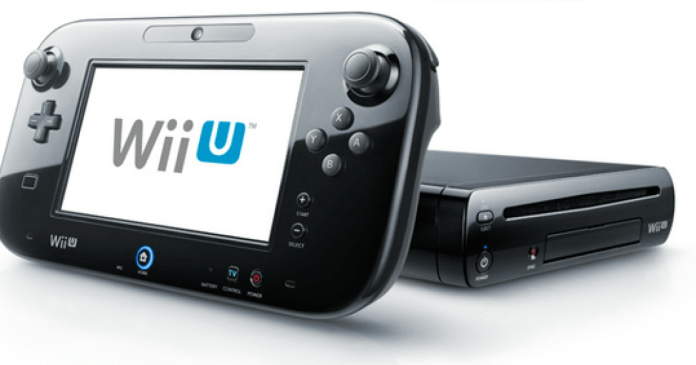In the world of gaming consoles, the Nintendo Wii U often stands as a unique case study. Launched in 2012, it was Nintendo’s first foray into HD gaming, and while it has its fair share of criticism, I believe it deserves a deeper look, especially regarding its innovative hardware. One of the most intriguing aspects of the Wii U is its custom AMD solution, particularly the Espresso CPU. In this retro review, I will explore how this processor shaped the console’s capabilities, its performance in gaming, and its impact on the industry.
A Brief Overview of the Wii U
Before diving into the specifics of the Espresso CPU, let’s set the stage. The Nintendo Wii U was a significant departure from its predecessor, the Wii. With the incorporation of a tablet-like GamePad controller, it aimed to provide a more interactive gaming experience. However, the console faced challenges, including a lack of third-party support and competition from more powerful systems such as the PlayStation 4 and Xbox One.
The AMD Espresso CPU: What Is It?
At the heart of the Wii U is the Espresso CPU, a custom-designed processor developed by AMD. This dual-core system-on-chip (SoC) architecture was built on a 28nm process, which was quite advanced for its time. The Espresso CPU was designed to deliver a balance of performance and power efficiency, making it suitable for a home console.
Specifications
- Architecture: The Espresso CPU is based on the PowerPC architecture, which was a key feature of many previous Nintendo consoles.
- Cores: It consists of two cores, each running at a clock speed of approximately 1.24 GHz.
- Cache: The CPU features a 1MB L2 cache, which helps improve processing speeds and overall performance.
Performance in Gaming
When I think back to my experiences with the Wii U, I recall the seamless gameplay and visual quality that the Espresso CPU helped deliver. While it may not have matched the raw power of its contemporaries, it provided a solid gaming experience, allowing developers to create unique titles that leveraged the console’s unique features.
The GPU: Radeon HD 7000 Series
Complementing the Espresso CPU is the GPU, which is based on AMD’s Radeon HD 7000 series. This partnership not only contributed to the console’s visual fidelity but also allowed for complex graphical effects that were previously difficult to achieve on a Nintendo platform.
Visual Enhancements
The combination of the Espresso CPU and the Radeon GPU allowed the Wii U to render games in 1080p resolution, ensuring sharper graphics and more vibrant colors. Some standout titles, such as Super Mario 3D World and Splatoon, showcased the console’s graphical capabilities, making use of the hardware synergy to deliver beautiful gaming experiences.
Unique Features of the Wii U
While the Espresso CPU played a pivotal role in the console’s performance, the Wii U was also distinguished by several unique features:
GamePad Controller
The Wii U’s GamePad was revolutionary, offering a second screen that could display game information, maps, and even serve as a standalone screen for off-TV play. This feature was made possible by the efficient processing capabilities of the Espresso CPU.
Asymmetrical Gameplay
The combination of the GamePad and the Espresso CPU allowed for asymmetrical gameplay experiences. Titles like Nintendoland utilized the unique setup to create engaging multiplayer experiences that set the Wii U apart from its competitors.
Challenges Faced by the Wii U
Despite its innovative features and technology, the Wii U was not without its challenges. Sales struggled compared to competitors, and many third-party developers hesitated to support the platform. This lack of support was, in part, due to the difficulty in porting games to the Espresso CPU architecture, which differed significantly from the x86 architecture used in the PS4 and Xbox One.
Third-Party Support
The lack of robust third-party support significantly affected the library of available games. Many gamers found themselves longing for popular titles that were readily available on other platforms. This was a missed opportunity for the Wii U, as the powerful AMD hardware could have supported a broader range of games.
Legacy of the Wii U
Looking back, I see the Wii U as a console that laid the groundwork for future innovations at Nintendo. While it was not commercially successful, it introduced concepts that would be refined in the Nintendo Switch. The Espresso CPU, in particular, demonstrated AMD’s capability to deliver efficient performance in gaming consoles, which would carry over into future partnerships with Nintendo.
Influence on the Switch
The Nintendo Switch, released in 2017, built upon many ideas introduced with the Wii U. The hybrid nature of the console and the tablet-like controller echoes the innovations of its predecessor. The lessons learned from the Espresso CPU’s performance and the overall architecture undoubtedly influenced the development of the Switch’s custom NVIDIA Tegra chip.
Conclusion
In this retro review, I have explored the Nintendo Wii U and its AMD Espresso CPU. While the console faced significant challenges during its lifespan, it also introduced innovative features and laid the groundwork for future successes. The Espresso CPU, with its unique architecture and solid performance, played a crucial role in defining the console’s capabilities, allowing for engaging gameplay experiences that still resonate with fans today.
As we reflect on the legacy of the Wii U, it is essential to recognize the role that innovative hardware plays in shaping the gaming landscape. The Espresso CPU may not have achieved the same recognition as other processors, but its contributions to the world of gaming are undeniable. As we move forward, it’s exciting to think about how these early innovations will continue to influence the future of gaming technology.
Further Reading
For more insights into the world of gaming consoles, consider exploring these articles:
- The Evolution of Nintendo Consoles
- AMD’s Role in Gaming Hardware
- A Look Back at Iconic Nintendo Games
By understanding the past, we can better appreciate the advancements that shape the future of gaming. Thank you for joining me in this retrospective look at the Nintendo Wii U and the AMD solution that powered it!
<iframe width="560" height="315" src="https://www.youtube.com/embed/AgibZPCkreQ?si=2FbvQGgqgvWwV3ka" title="YouTube video player" frameborder="0" allow="accelerometer; autoplay; clipboard-write; encrypted-media; gyroscope; picture-in-picture; web-share" referrerpolicy="strict-origin-when-cross-origin" allowfullscreen></iframe>




.jpg?w=100&resize=100,70&ssl=1)
/cdn.vox-cdn.com/uploads/chorus_asset/file/25719630/247350_CMBF_2024_EWinataBlackFriday_2040x1360.png?w=100&resize=100,70&ssl=1)